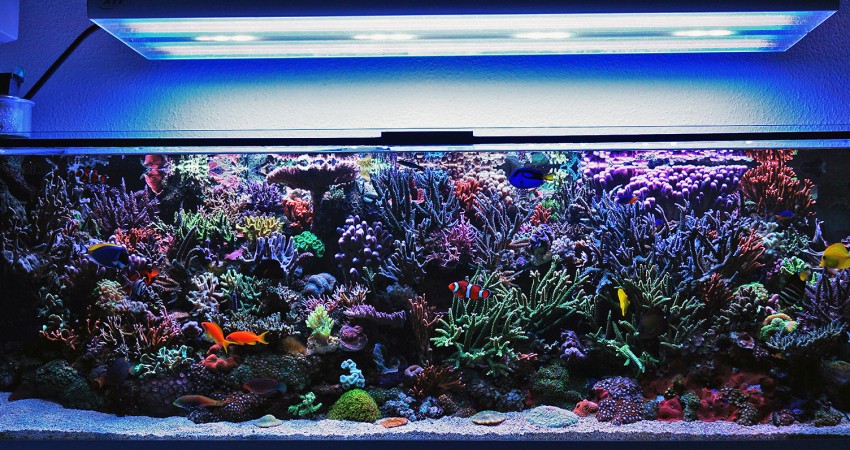Check out this new reef tank video by Martin Kunzelnick and tell us this is not a work of art. What we love most about this reef tank, other than the luscious and healthy corals, the active and vibrant fish, and the otherwise impeccable reefscape, is the choice of lighting system.
You see we already know that T5s produce a very diffuse and nutritious lighting for corals with great pink and warm colors, while LED lights offer efficiency, controllability, glitter lines from their point source lighting, and they have stronger colors in the blue and cool end of the color spectrum. Seeing these two lights in person it is is easy to see how different they truly are in their delivery of important lighting over a reef tank.
Meanwhile, a picture truly doesn’t convey the fundamental difference in how light penetrates and disperses in the aquarium water from these two different light sources. However, this exquisite video of a beautiful reef tank clearly shows how the T5 light provides a good foundation of lighting intensity and spectrum, which is supplemented by the glitter lines, essentially bursts of concentrated light, from the LED part of this reef tank’s lights.
This 265 gallon reef tank is 6.5 by 2.3 by 2.3 feet large, and it uses a single ATI LED & T5 fixture, the ATI Powermodule with 8 x 80 watt T5 lamps and 4 x 75 watt LED clusters. In Europe where T5 lighting has remained popular, we’re seeing more of these hybrid lighting setups being used on really nice, large successful reef tanks. But it’s a pity that in North America reefers are all or nothing, either all LED, halide or T5, with not enough diversity of lighting sources.
With tanks such as these continuing to tease us with the exceptional results of using both T5 and LED lighting, we hope to see more hybrid lighting sources and fixtures become available to American reef hobbyists. Perhaps with new lights like the Euroquatics E5 LED tubes, it will be easier than ever for reefers to get the best of both worlds. [Korallen Meer]



